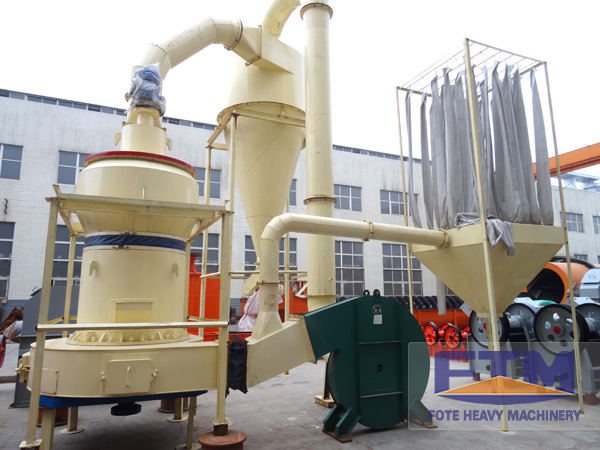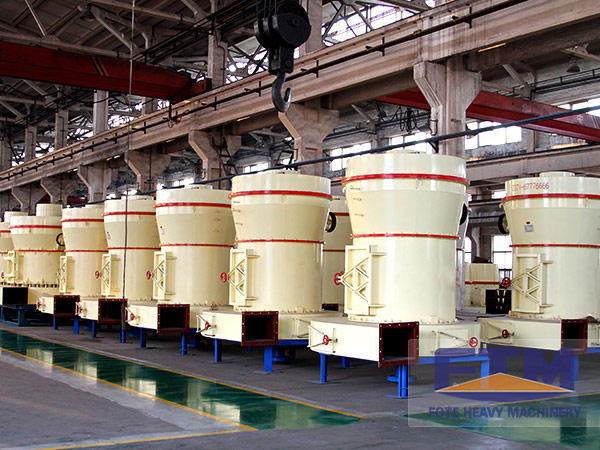NEWS
Introduction to the Working Principle & Operation Flow of Raymond Mill
By: Fote MachineryOctober 16th,2018
Raymond mill consists of a main machine, an analysis machine, a pipeline device, a blower, etc., which can be equipped with a crusher, a hoist, a vibrating feeder, etc. according to the needs of the user.

1. The Working Principle of Raymond Mill
The grinding roller is tightly pressed on the grinding ring under the action of centrifugal force, and the material is sent by the blade to the middle of the grinding roller and the grinding ring and broken into powder under the action of the rolling pressure. Then, the powdered material is blown by the fan and passed through the analysis machine, and the material that meets the fineness requirement passes through the analysis machine. If it does not meet the requirements, it is sent back to the grinding chamber to continue grinding. The material of the analyzer is separated into the cyclone separator for collection. In the case of exhaust, industrial filter cloth is used to isolate the exhaust.
Raymond mill is mainly used for processing non-flammable and explosive mineral products with Mohs hardness of not more than 9.3 and humidity below 6%, such as gypsum, talc, calcite, limestone, marble, barite, dolomite, granite, Kaolin, etc. The fineness of the finished product is between 613 μm and 440 μm (0.613 mm - 0.44 mm). It can meet the requirements of different users through the combined action of the analyzer and the fan.
2. The Operation Flow of Raymond Mill
After the bulk material is crushed to the required particle size by the jaw crusher, the material will be sent to the storage hopper by the hoist, and then uniformly fed into the main machine grinding chamber through the vibrating feeder for continuous grinding, and the powder after grinding taken away by the fan airflow. After being classified by the analysis machine, the fine powder conforming to the fineness enters the large cyclone collector through the pipeline, and is separated and collected, and then discharged into the powder tube to be the finished powder. The air stream is then drawn into the blower by a return duct at the upper end of the large cyclone collector. The whole airflow system of the machine is closed and circulating, and it circulates under positive and negative pressure conditions.
Because the material to be ground has certain water content, the heat generated during grinding causes the gas in the grinding chamber to evaporate and change the gas flow. Moreover, the connection of the pipelines of the whole machine is not tight, so that the outside air is sucked in, so that the air volume of the circulating airflow is increased, and finally the powder mill has less powder or even a blasting machine. In this regard, the new type of mill has been equipped with explosion-proof measures on the upper part of the body to avoid accidental damage caused by the explosion of the Raymond mill. At the same time, the balance of the airflow can be achieved by adjusting the residual air duct between the fan and the main engine. The excess gas is introduced into the small cyclone collector, and then the fine powder brought into the residual gas is collected, and finally discharged into the atmosphere by the upper exhaust pipe of the small cyclone collector, or introduced into the dust collector to purify the exhaust air.


